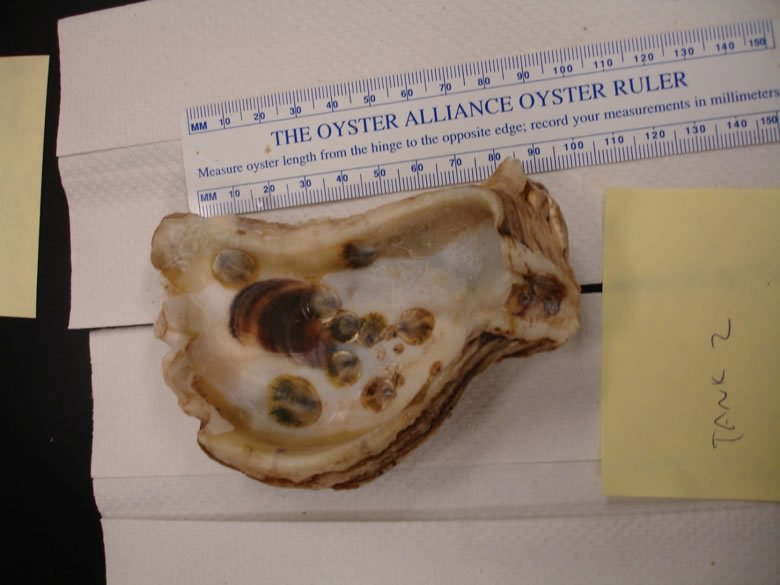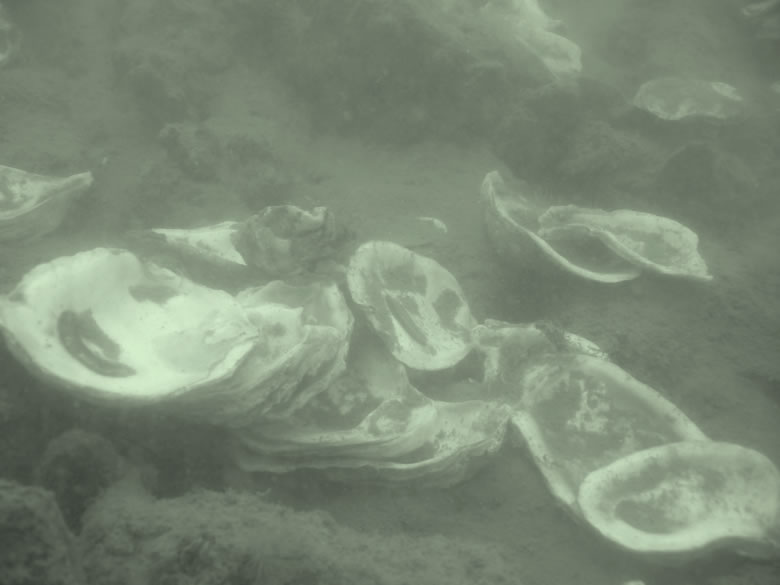 |
 | |
Spat survival in relation to the orientation of the shell on the bottom Another factor potentially influencing spat survival that the Paynter Lab has explored in collaboration with researchers at the University of Maryland Center for Environmental Science’s Horn Point Oyster Hatchery is the orientation of hatchery shells on the bottom. At the hatchery, free-swimming spat are settled onto valves of recycled oyster shells, to eventually be planted into the bay.
Figure 1. Young oyster spat-on-shell. In this image, spat are easily visible as small disks (approximately 30 mm or smaller in length). After hatchery shells are released from the planting boat, they free-fall towards the bottom. Below is a picture of hatchery shells moments after planting in the Choptank River. Note the cleanliness of the new shells compared to shells that were already on the bottom.
Figure 2. Recently planted spat-on-shell. Hatchery shell (white in this image) from the planting is easily spotted atop older shell and sand. We are interested in understanding many aspects of shell orientation as it relates to spat survival:
We are currently collecting data to answer these questions but so far have learned that most shells land smooth side up (as seen in the photo above) when they are released from the planting boat.
|
||

